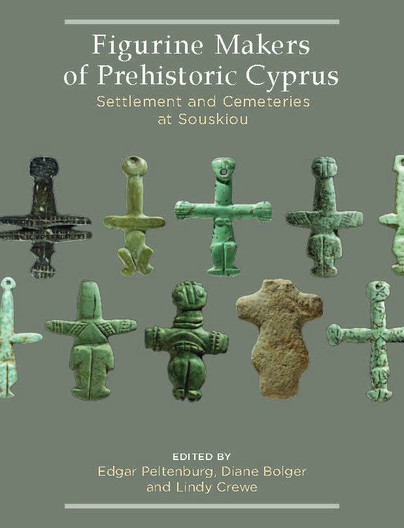Google Books previews are unavailable because you have chosen to turn off third party cookies for enhanced content. Visit our cookies page to review your cookie settings.
Figurine Makers of Prehistoric Cyprus (Hardback)
Settlement and Cemeteries at Souskiou
Imprint: Oxbow Books
Pages: 368
ISBN: 9781789250190
Published: 25th July 2019
Script Academic & Professional
Pages: 368
ISBN: 9781789250190
Published: 25th July 2019
Script Academic & Professional
You'll be £19.95 closer to your next £10.00 credit when you purchase Figurine Makers of Prehistoric Cyprus. What's this?
+£4.99 UK Delivery or free UK delivery if order is over £40
(click here for international delivery rates)
Order within the next 11 hours, 59 minutes to get your order processed the next working day!
Need a currency converter? Check XE.com for live rates
(click here for international delivery rates)
Order within the next 11 hours, 59 minutes to get your order processed the next working day!
Need a currency converter? Check XE.com for live rates
The Chalcolithic period in Cyprus has been known since Porphyrios Dikaios’ excavations at Erimi in the 1930s and through the appearance in the antiquities market of illicitly acquired anthropomorphic cruciform figures, often manufactured from picrolite, a soft blue-green stone. The excavations of the settlement and cemetery at Souskiou Laona reported on in this volume paint a very different picture of life on the island during the late 4th and early 3rd millennia BC. Burial practices at other known sites are generally single inhumations in intramural pit graves, only rarely equipped with artefacts. At Souskiou, multiple inhumations were interred in deep rock-cut tombs clustered in extra-mural cemeteries. Although the sites were also subjected to extensive looting, excavations have revealed complex multi-stage burial practices with arrangements of disarticulated and articulated burials accompanied by a rich variety of grave goods. Chief among these are a multitude of cruciform figurines and pendants. This unusual treatment of the dead, which has not been recorded elsewhere in Cyprus, shifts the focus from the individual to the communal, and provides evidence for significant changes involving kinship group links to common ancestors. Excavations at the Laona settlement have furnished evidence suggesting that it functioned as a specialised centre for the procurement and manufacture of picrolite during its early phase. The subsequent decline of picrolite production and the earliest known occurrence of new types of ornaments, such as faience beads and copper spiral pendants, attest to important changes involving the transformation of personal and social identities during the first centuries of the 3rd millennium BC, a topic that forms a central theme of this final report on the site.
Customers who bought this title also bought...
Other titles in Oxbow Books...
















